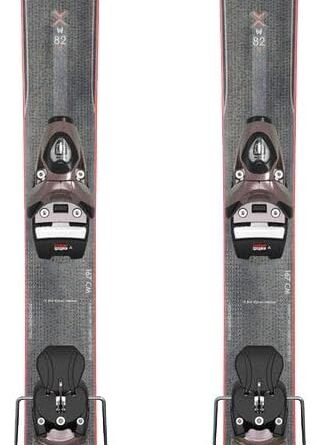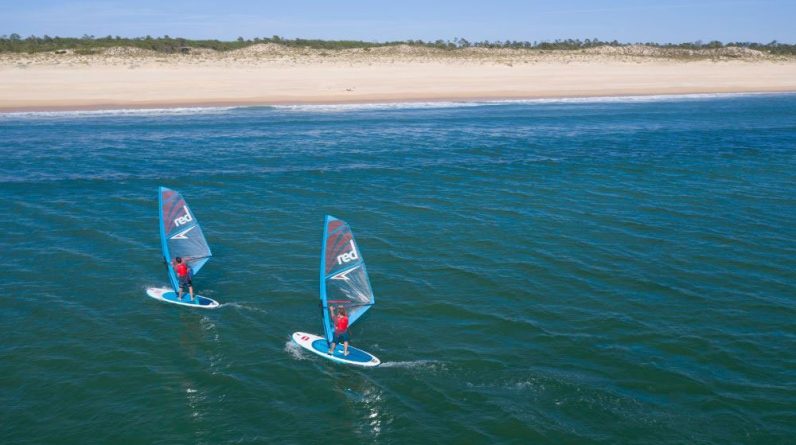
When it comes to enjoying the thrill of windsurfing, it’s important to prioritize safety to ensure a fun and worry-free experience. From wearing a proper wetsuit to using a leash, there are several precautions you should take when using a windsurfing board. By following these guidelines, you can maximize your enjoyment on the water while minimizing any potential risks.
Choosing the right equipment
Selecting a suitable windsurfing board
When it comes to windsurfing, choosing the right equipment is crucial for both safety and performance. One of the most important decisions is selecting a suitable windsurfing board. The size and volume of the board should be based on your weight and skill level. A larger board will provide more stability and buoyancy for beginners, while a smaller board will offer better maneuverability for experienced riders. It is essential to consult with a knowledgeable windsurfing professional or instructor to ensure you choose the right board for your specific needs.
Using appropriate sails and fins
In addition to selecting the right board, using appropriate sails and fins is equally important for a safe and enjoyable windsurfing experience. Sails come in different sizes, and it is crucial to match the sail’s size to the wind conditions. Using an oversized sail in strong winds can lead to loss of control and accidents, while an undersized sail in light winds can make it difficult to maintain speed and stability. Fins also play a significant role in windsurfing, providing stability and control. Choosing the right fin size and type for your board will help optimize your performance on the water.
Assessing weather conditions
Checking the wind speed and direction
Before heading out on the water, it is essential to assess the weather conditions, starting with the wind speed and direction. Strong winds might be enticing for experienced riders seeking excitement, but they can also pose risks for beginners or those lacking experience in handling powerful gusts. Checking wind forecasts or using handheld wind meters can provide valuable information on the wind conditions. Understanding the wind direction is crucial for planning your routes and avoiding obstacles or dangerous areas on the water.
Evaluating water conditions
Assessing water conditions is equally important as checking the wind. Factors such as waves, currents, and water temperature can significantly impact your sailing experience. Large waves and strong currents can make it challenging to control the board, especially for beginners. Monitoring the water temperature is crucial for knowing what protective gear to wear to prevent hypothermia in cold conditions. Evaluating water conditions allows you to make informed decisions and adjust your plans accordingly for a safer and more enjoyable windsurfing session.
Being aware of local weather forecasts
While assessing weather conditions yourself is essential, it is equally crucial to stay updated with local weather forecasts. Weather conditions can change rapidly, and it is essential to know if a storm or adverse weather conditions are anticipated. Local weather forecasts provide valuable information about any potential thunderstorms, high winds, or other hazardous conditions that may be approaching the area. Making it a habit to check the forecasts before setting out allows you to plan your windsurfing sessions accordingly and avoid getting caught in unfavorable weather conditions.
Avoiding unfavorable weather conditions
When it comes to windsurfing, safety should always be the top priority. If weather conditions are unfavorable, it is wise to avoid going out on the water. Strong winds, thunderstorms, or choppy waters can put your safety at risk. It is better to postpone your windsurfing session or choose a different location where conditions are more suitable. Always remember that windsurfing should be a fun and thrilling activity, but not at the expense of your well-being. By being aware of and respecting unfavorable weather conditions, you can ensure a safer and more enjoyable experience on the water.
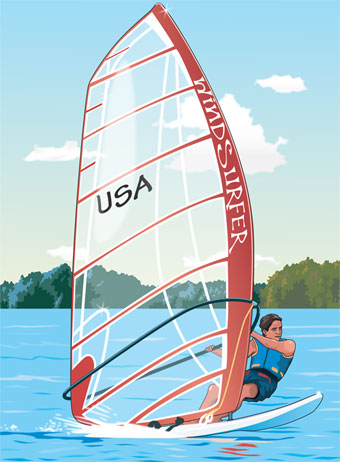
This image is property of ke-courses-production.s3.amazonaws.com.
Wearing proper safety gear
Using a well-fitted life jacket
Wearing a life jacket is a must when windsurfing. It is crucial to choose a life jacket that fits properly and is approved for windsurfing or water sports. A well-fitted life jacket will provide buoyancy and keep you afloat in case of a fall or loss of control. It is important to adjust the straps and ensure a snug fit before hitting the water. Always remember to fasten the buckles securely and check them periodically during your windsurfing session to ensure the life jacket stays in place.
Wearing a helmet
To protect your head from any potential impact, wearing a helmet is highly recommended when windsurfing. Falls and collisions can happen unexpectedly, and a helmet can provide crucial protection against head injuries. Make sure to choose a helmet specifically designed for water sports and windsurfing. It should fit comfortably and securely, and the chin strap should be fastened at all times. Prioritizing your safety by wearing a helmet will give you peace of mind and allow you to enjoy your windsurfing experience to the fullest.
Protecting feet with neoprene booties or water shoes
While windsurfing, your feet can be exposed to various hazards such as sharp shells, rocks, or even sea creatures. To protect your feet and provide extra grip on the board, it is recommended to wear neoprene booties or water shoes. These specialized footwear options are made from durable materials that are resistant to water, sun, and abrasion. They offer protection while still allowing for flexibility and ease of movement. Investing in a good pair of booties or water shoes will not only enhance your safety but also make your windsurfing sessions more comfortable and enjoyable.
Utilizing impact vest for additional protection
When engaging in any water sport, including windsurfing, wearing an impact vest is a smart choice to enhance your safety. An impact vest provides extra protection for your upper body, especially your chest and torso. It is designed to absorb impacts and reduce the risk of injury in case of falls or collisions. Ensure the impact vest fits snugly and does not restrict your movement. The added buoyancy from the vest can also contribute to your safety on the water. By utilizing an impact vest, you are taking an extra precaution to protect yourself while enjoying your windsurfing adventure.
Learning windsurfing techniques
Taking professional windsurfing lessons
To ensure your safety and maximize your enjoyment of windsurfing, it is highly recommended to take professional windsurfing lessons. Learning from a qualified instructor will provide you with the foundational knowledge and essential skills to become a competent and confident windsurfer. They will teach you proper techniques for balancing, maneuvering, and handling different wind conditions. Additionally, instructors emphasize safety measures and ensure you are aware of potential risks and how to mitigate them. So, invest in professional lessons and kick-start your windsurfing journey safely and effectively.
Practicing basic maneuvers and balance
Learning windsurfing techniques is an ongoing process, and regular practice is key to improving your skills. Start by practicing basic maneuvers such as steering, tacking, and jibing. Focus on maintaining proper balance and body positioning on the board. Practice transitioning between different stances and adjusting your weight distribution to avoid losing control. As you gain more experience, you can challenge yourself with more advanced maneuvers. Remember, practice makes perfect, and consistent training will help you become a proficient and confident windsurfer.
Understanding right of way rules on water
Just like with any other water sport, there are right of way rules that windsurfers must follow to ensure everyone’s safety. Understanding these rules is crucial for avoiding collisions and maintaining a harmonious environment on the water. The general rule states that windsurfers with the wind coming from their starboard side have the right of way over those with the wind coming from their port side. However, it is vital to familiarize yourself with any specific local regulations that may vary from this general rule. Always be mindful of other water users and respect their right of way to avoid any accidents or conflicts.
Staying within skill level and gradually progressing
As a windsurfer, it is important to know your limits and stay within your skill level. Challenging yourself is great for growth and improvement, but it is crucial to do so gradually and responsibly. Pushing yourself too far beyond your abilities can lead to accidents and injuries. Take time to build your skills and confidence before attempting more advanced maneuvers or sailing in challenging conditions. Remember that windsurfing is a journey, and each step of the process is an opportunity to learn, improve, and enjoy the sport in a safe and controlled manner.
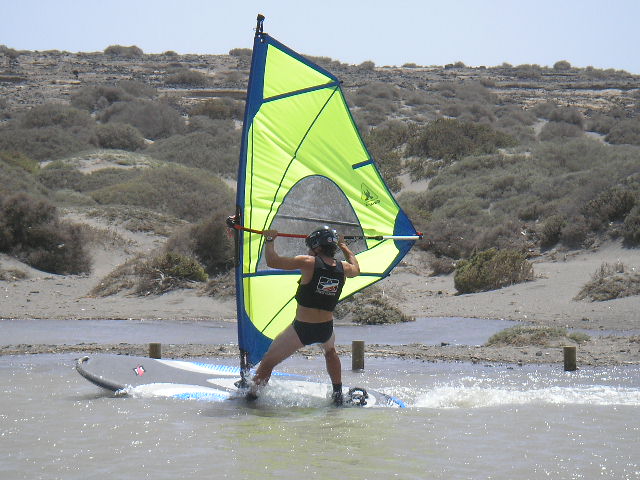
This image is property of howtowindsurf101.com.
Performing regular equipment checks
Inspecting board, mast, and sail for damages
Before each windsurfing session, it is essential to perform a thorough inspection of your equipment for any signs of damage. Check your board for cracks, dents, or delaminations. Inspect the mast for any corrosion, loose fittings, or visible wear. Examine your sail for tears, frayed stitching, or weakened areas. Ensuring your equipment is in good condition will minimize the chances of equipment failure while on the water. If you notice any damages, it is important to address them promptly by seeking professional repairs or replacing the affected parts.
Checking the integrity of footstraps and harness lines
Footstraps and harness lines play a significant role in maintaining stability and control while windsurfing. Before setting out, check the integrity of your footstraps and harness lines. Ensure they are securely attached and show no signs of wear or stretching. Loose footstraps or faulty harness lines can increase the risk of accidents or loss of control while on the water. Regularly inspect these components and replace them if you notice any signs of damage or if they are no longer providing the necessary support and security.
Ensuring proper rigging and sail tension
Proper rigging is crucial for optimal performance and safety while windsurfing. Before heading out on the water, make sure your sail is rigged correctly, and the tension is properly adjusted. Check that all components, such as the boom, mast base, and mast extension, are securely fastened and in good working condition. Adjust the sail tension according to the wind conditions to optimize your control and maneuverability on the water. Paying attention to rigging details will enhance your overall windsurfing experience and minimize the risk of equipment failure.
Verifying the condition of the boom and mast base
The boom and mast base are essential components for controlling the sail and maintaining stability while windsurfing. It is essential to regularly check their condition before each session. Ensure the boom is securely attached and free from any cracks or deformations. Verify that the lines and adjustments on the boom are functioning correctly. Inspect the mast base for any signs of wear or damage. A faulty boom or mast base can compromise your control over the sail and increase the risk of accidents. By verifying the condition of these components, you can address any issues proactively and ensure a safe and enjoyable windsurfing experience.
Launching and landing safely
Choosing a proper launch and landing site
To ensure a safe windsurfing session, it is important to choose a suitable launch and landing site. Look for locations with enough space and an easy access point to the water. Avoid areas with crowded beaches or other watercraft traffic. Choose a place where you can launch and land without any obstacles, such as rocks or shallow areas. Having ample space allows you to maneuver freely without endangering yourself or others. By selecting the right launch and landing site, you can start and end your windsurfing adventures safely and efficiently.
Avoiding crowded areas or obstacles
When windsurfing, it is crucial to stay clear of crowded areas or any obstacles that may pose a threat to your safety. Avoid sailing in areas with heavy boat traffic, swimming zones, or other water sports enthusiasts. These areas can be challenging to navigate, and accidents can happen due to limited space and different speeds. By steering clear of crowded areas, you minimize the chances of collisions or conflicts and ensure a safer windsurfing environment for yourself and others.
Keeping distance from other windsurfers
While it can be tempting to join other windsurfers for a group session, it is important to maintain a safe distance on the water. Each windsurfer needs enough space to maneuver and react to changing conditions. Keeping a reasonable distance from other windsurfers reduces the risk of collisions and entanglements. Remember to be mindful of your surroundings, communicate clearly if necessary, and always prioritize everyone’s safety. By respecting personal space, you contribute to a safer and more enjoyable experience for all windsurfers in the area.
Being cautious when entering or exiting the water
Entering or exiting the water can be a critical moment during your windsurfing session. It is crucial to approach these moments with caution and awareness of your surroundings. Check for any hazards, such as submerged rocks or strong currents, before entering or exiting. Take your time to familiarize yourself with the water conditions in the area. Additionally, be considerate of other windsurfers who may be launching or landing nearby. Communicate your intentions clearly and wait for your turn if necessary. By being cautious during these transitional moments, you reduce the risk of accidents or injuries.

This image is property of windy.app.
Being mindful of others
Respecting fellow windsurfers and water users
Respecting your fellow windsurfers and other water users is essential for maintaining a harmonious environment on the water. Treat others as you would like to be treated and follow the golden rule of water etiquette. Be friendly, communicative, and considerate of others’ space and rights. Yield when necessary and avoid engaging in reckless behaviors that could endanger yourself or others. By demonstrating respect and understanding towards fellow windsurfers and water users, you contribute to a positive windsurfing community and a safer overall experience for everyone.
Avoiding reckless or dangerous maneuvers
While windsurfing can be an exhilarating activity, it is important to resist the temptation to engage in reckless or dangerous maneuvers that could put yourself and others at risk. Avoid excessive speed or sudden changes in direction without proper control and awareness. Always maintain a reasonable level of caution and adhere to safe practices. Remember that the thrill of windsurfing can still be enjoyed within the boundaries of responsible and safe behavior. By avoiding reckless or dangerous maneuvers, you prioritize your safety and the well-being of those around you.
Maintaining a safe distance from swimmers
In areas where swimmers and windsurfers coexist, it is crucial to maintain a safe distance from swimmers to prevent accidents or collisions. Swimmers may not be expecting windsurfers in their vicinity, and it is your responsibility to be aware of their presence. Give swimmers a wide berth, and if you need to pass nearby, do so at a safe distance and reduce your speed. Always be attentive and ready to adjust your course to avoid any potential accidents. By respecting the safety of swimmers, you contribute to a positive and secure environment for all water users.
Giving way to boats and other vessels
When windsurfing in areas shared with boats and other vessels, it is important to give way and show respect to these larger and potentially faster-moving watercraft. Understand the right of way rules and yield to boats, sailboats, or any vessel that has limited maneuverability. Be aware of the distinct differences in acceleration and deceleration between windsurfers and motorized vessels, allowing ample time for any necessary course adjustments. By giving way to larger vessels, you ensure safe navigation and minimize the risk of accidents or collisions.
Knowing emergency procedures
Familiarizing with self-rescue techniques
Even with the utmost precautions, emergencies can still occur while windsurfing. Therefore, it is crucial to familiarize yourself with self-rescue techniques. These techniques allow you to safely return to the shore or to your board in case of equipment failure or exhaustion. Self-rescue techniques can include using your sail as a floatation device, uphauling your sail without a harness, or paddling with your board to reach safety. Having these essential skills at your disposal will enable you to handle unexpected situations effectively and ensure your safety on the water.
Understanding signaling and distress protocols
In the event of an emergency or when you require assistance, it is vital to understand the signaling and distress protocols. These protocols include using specific hand signals, whistle signals, or distress flags to communicate your need for help. Familiarize yourself with these signals and ensure they are recognized by other boaters and windsurfers in your area. Always carry a whistle or a signaling device with you as part of your safety equipment. By understanding and utilizing signaling and distress protocols, you can quickly attract attention and receive the necessary assistance in critical situations.
Knowing how to handle equipment malfunctions
Equipment malfunctions can occur unexpectedly during windsurfing sessions. It is essential to know how to handle these situations to prevent further risks or injuries. For instance, if your mast or sail becomes jammed, it is important to stay calm and try to release or disassemble them safely. If there are problems with your board, such as a damaged fin or a broken footstrap, assess the situation and determine the best course of action. Being knowledgeable about basic equipment repairs and having the necessary tools on hand can also be helpful in resolving minor issues. By knowing how to handle equipment malfunctions, you can address the situation effectively and ensure your safety on the water.
Being aware of local emergency contact information
When engaging in any water sport, it is crucial to be aware of local emergency contact information. Store emergency numbers or relevant coast guard stations in your phone or carry them with you in case of emergencies. Knowing the location of nearby medical facilities or clinics can also be beneficial. In the event of an accident, injury, or any other critical situation, quick access to emergency services is essential. By being prepared and having the necessary contact information readily available, you can seek help promptly and potentially save precious time in emergency situations.

This image is property of greenwatersports.com.
Checking physical condition
Assessing personal fitness level
Before embarking on any physical activity, including windsurfing, it is important to assess your personal fitness level. Windsurfing can be physically demanding, requiring core strength, balance, and endurance. Regular cardiovascular exercises, strength training, and flexibility exercises can help improve your fitness for windsurfing. If you have concerns about your fitness level, consult with a healthcare professional or a certified windsurfing instructor who can provide guidance on appropriate exercises and preparations to meet your specific needs.
Being aware of any medical conditions
If you have any pre-existing medical conditions, it is crucial to be aware of how they may affect your windsurfing experience. Certain medical conditions, such as heart conditions, asthma, or epilepsy, may require special precautions or even restrictions on engaging in strenuous physical activities like windsurfing. Consult with your healthcare provider to assess if your condition allows for safe participation in windsurfing. Being aware of and honest about your medical conditions will enable you to make informed decisions and ensure your well-being while enjoying the sport.
Avoiding windsurfing in extreme exhaustion
Windsurfing requires mental focus and physical exertion. It is important to recognize signs of extreme exhaustion and rest appropriately to avoid accidents or injuries. Overexertion can lead to impaired judgment, slower reaction times, and decreased physical capabilities, increasing the risk of accidents. If you feel excessively tired or fatigued, take a break, hydrate, and rest. Listen to your body’s signals and respect the need for adequate recovery. By avoiding windsurfing in a state of extreme exhaustion, you prioritize your safety and maintain optimal performance on the water.
Listening to your body and taking breaks when needed
While windsurfing can be an exciting and exhilarating activity, it is essential to listen to your body and take breaks when needed. Pay attention to any signs of fatigue, muscle soreness, or discomfort. Take regular breaks to rest, hydrate, and recharge. Ignoring the signals from your body can lead to decreased focus, reduced physical capabilities, and a higher risk of accidents. By respecting your body’s needs and taking appropriate breaks, you ensure a safer and more enjoyable windsurfing experience.
Being aware of local regulations
Understanding any specific windsurfing rules in the area
Different areas may have specific rules and regulations regarding windsurfing, and it is essential to familiarize yourself with them before heading out on the water. Some areas may have designated windsurfing zones or restricted areas for safety or environmental reasons. Understanding and respecting these rules helps you stay on the right side of the law and promotes responsible windsurfing practices. Research local regulations, consult with local authorities if necessary, and comply with any specific windsurfing rules in your area.
Checking if permits or licenses are required
In some locations, permits or licenses may be required for windsurfing. These permits are typically in place to ensure the safety of all water users and protect sensitive marine environments. Research whether your intended windsurfing location requires any permits or licenses and follow the necessary procedures to obtain them. Ignoring permit requirements can lead to legal consequences and impact the overall reputation of the windsurfing community. By being proactive and adhering to permit requirements, you demonstrate respect for the local regulations and contribute to a sustainable and responsible windsurfing culture.
Respecting protected marine and wildlife areas
Many coastal areas are home to protected marine and wildlife habitats. It is crucial to respect these areas and follow any guidelines or restrictions in place to preserve the delicate ecosystems. Avoid sailing in protected zones, coral reefs, or seagrass beds to prevent damage to these environments. Be mindful of areas where marine animals may be present, such as nesting sites for birds or resting areas for marine mammals. Respecting the boundaries of protected areas is not only a legal obligation but also a way to be an environmentally responsible windsurfer.
Adhering to noise pollution guidelines
To maintain a peaceful coexistence with other beachgoers and residents, it is important to adhere to noise pollution guidelines. Windsurfing can generate noise, especially when sailing at high speeds or in close proximity to shore. Be mindful of the volume of noise you produce and try to minimize disturbances for others. Avoid unnecessary shouting or excessive noise-making activities. By showing consideration for those around you, you help create a harmonious environment and ensure positive relationships with local communities.
In conclusion, windsurfing can offer thrilling and enjoyable experiences on the water. However, it is essential to prioritize safety at all times. By choosing the right equipment, assessing weather conditions, wearing proper safety gear, learning necessary techniques, performing regular equipment checks, launching and landing safely, being aware of others, knowing emergency procedures, checking physical condition, being mindful of local regulations, and following the outlined safety precautions, you can ensure a safe and rewarding windsurfing adventure. Remember to always put your safety first, respect others, and enjoy the sport responsibly. Happy windsurfing!
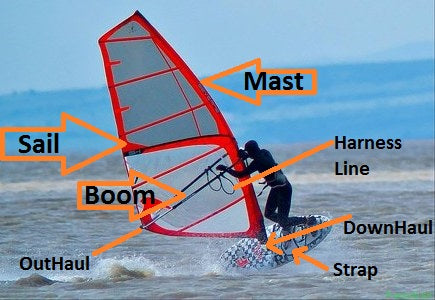
This image is property of cdn.shopify.com.






